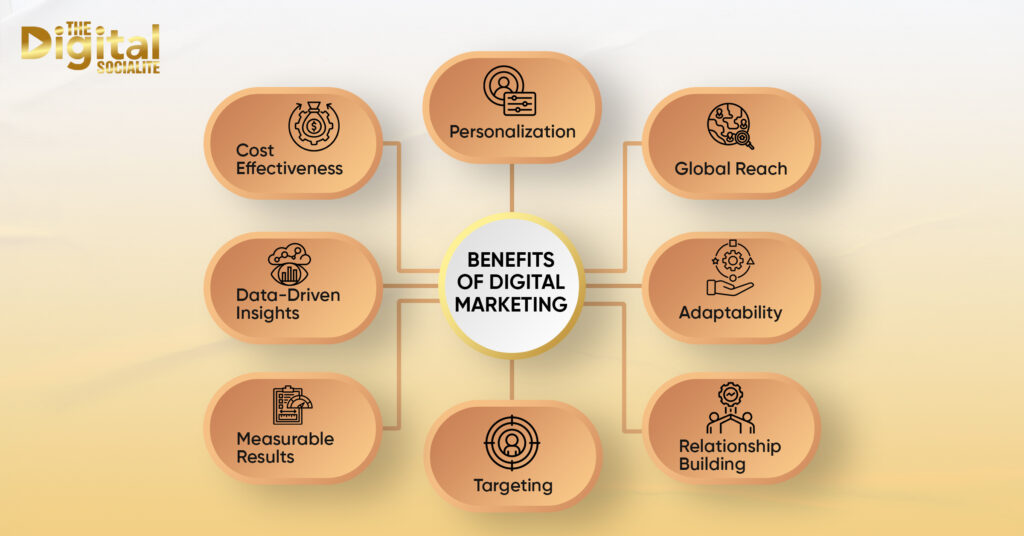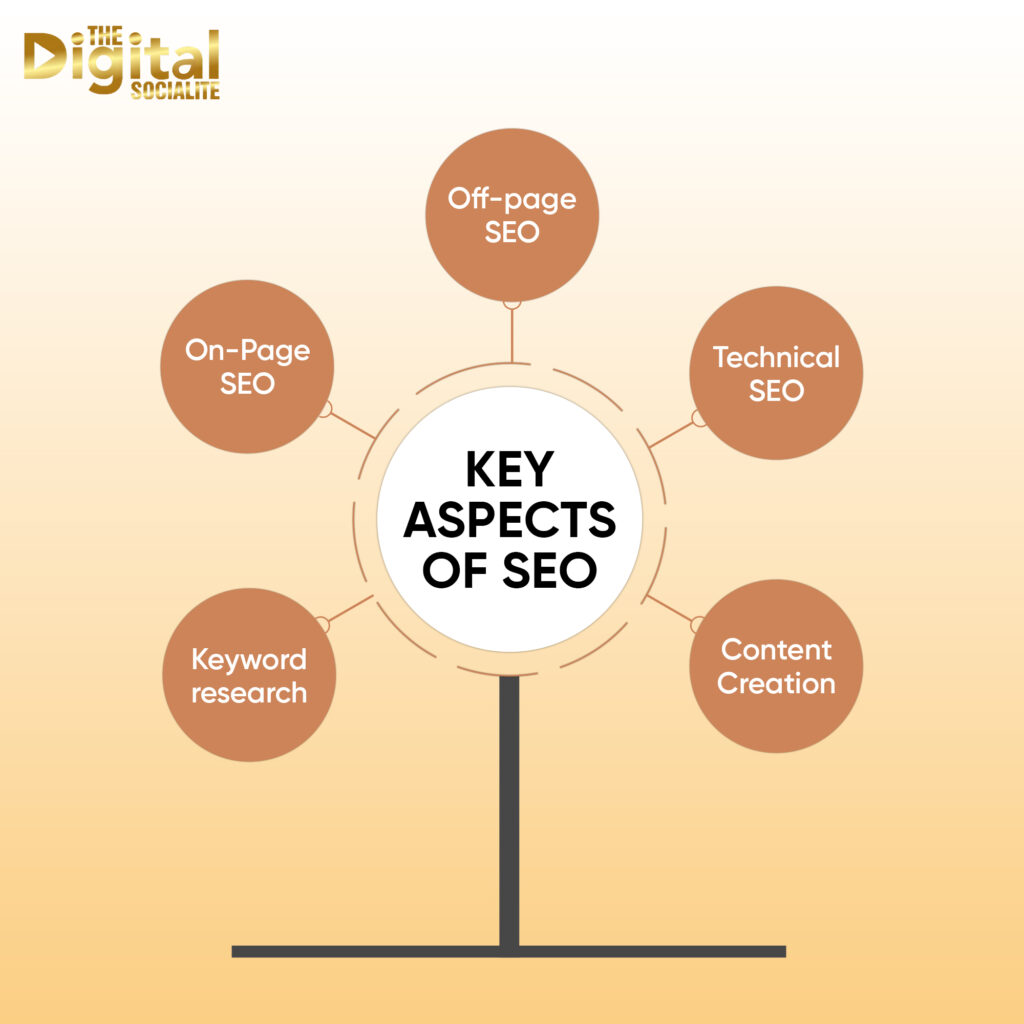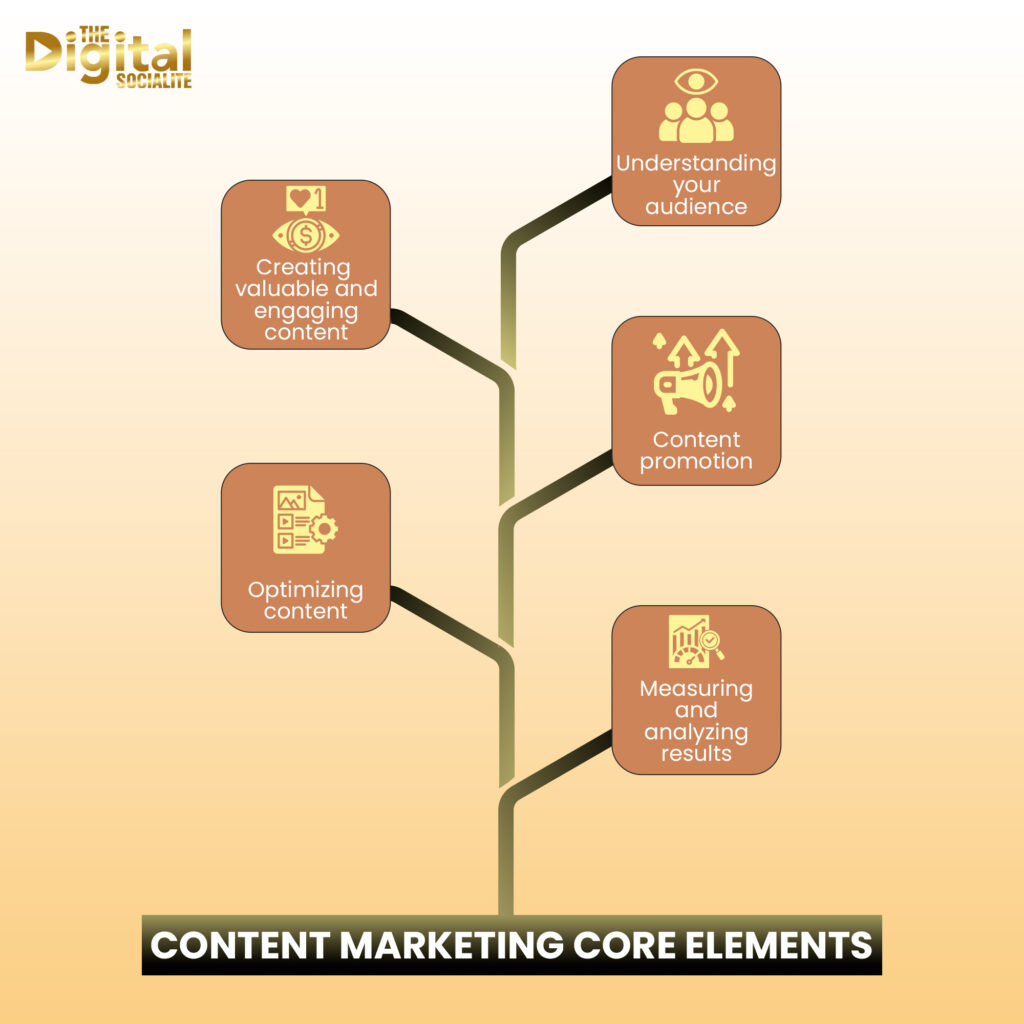The strategy of a successful business today requires digital marketing that is dynamic and unbreakable from its core elements. While traditional marketing methods blended marketing meaning using offline channels to reach prospects; digital marketing is connecting to prospects online. The Ultimate Guide to Digital Marketing is a full-length exposition on the subject covering its history, advantages, strategies, and trends. An interesting read, the guide is equally helpful for working marketers or newcomers who will get something to help them grow in their digital journey.
What is Digital Marketing?
Digital marketing is all marketing activities that use electronic devices and the Internet for communicating with current or prospective customers. It covers massive online channels using various modes and techniques for selling goods, services, or brands.
Introduction to Digital Marketing
Engaging with your audience on platforms where they are most active is considered the core of digital marketing. It is all about generating trust and impelling buying decisions by way of relevant content and personalized experiences. Digital marketing is not built solely upon online advertisement; rather, it constitutes a massive entity of online presence creation that deeply connects with a respective audience on their own terms, rendering valuable engagement.
Related: What is Digital Marketing and Why is it Important?
History and Evolution of Digital Marketing
Digital marketing began in the 1990s with the Internet. In 1993 the first click-through banner ad became a major turning point toward establishing online advertising. The first important search engine service known as Yahoo debuted in 1994. The late 1990s until the early 2000s brought forth both Google and MSN as search engines alongside CRM applications into the market.
The introduction of Google AdWords with pay-per-click advertising in 2000 made it possible for businesses to target keywords and measure the success of their investment, whereas the rise of Web 2.0 and social networking platforms like MySpace and Facebook changed the whole game in digital marketing with even more collaborations and the establishment of communities.
Benefits of Digital Marketing for Businesses

- Cost-Effectiveness: Digital marketing is more affordable than conventional marketing, making it an even better option for smaller companies in view of competition.
- Data-Driven Insights: Real-time data and analytics help companies understand what their customers have done and inform overall knowledge of campaign performance via digital marketing.
- Measurable Results: Many businesses can measure return on investment from digital marketing easily using conversion rates and other metrics like cost per lead.
- Personalization: Businesses, through digital marketing, can personalize their messages and offers to segments within their customer base, providing a far more appropriate and engaging experience.
- Targeting: Digital marketing greatly enables businesses to target the best buyers based on their interests, demographics, and online behavior.
- Global Reach: It is a cross-border approach and will have its reach to all corners of the world.
- Adaptability: Modify and optimize your campaign in light of real-time data and feedback that’s what digital marketing campaigns are about.
- Relationship Building: Digital marketing enables customers to connect with the company directly and thereby building up an everlasting relationship and brand loyalty.
Developing a Digital Marketing Strategy
Digital marketing strategy is the definition of such a strategy that should really enhance your business goals. Each enterprise has its specific vision, objectives regarding marketing, and audience to address. That is why a digital marketing strategy ensures that all online activities reinforce an overall business strategy and will result positively.

Steps on How to Formulate a Digital Marketing Strategy:
- Define your goals: Your digital marketing strategy requires a clear definition of all intended goals before implementation. Digital marketing uses its methods to establish brand recognition while producing prospects boosting purchases and improving customer devotion.
- Target your audience: Who will your efforts target needs to be determined before starting your venture. You need to investigate their age groups as well as their online interests and behavior patterns.
- Analyze your current situation: Assess your digital footprint starting from your social media presence and electronic marketing campaigns alongside your website operations. Analyze your company by evaluating your strengths combined with your weaknesses along with available opportunities and external risks to your business (SWOT analysis).
- Choose your channels: Select the appropriate online channels that match your audience profiles with your business objectives.
- Develop your content strategy: Design a Content Plan by Determining Both Subject Matter and Schedule when Developing Content Material.
- Set your budget: Decide the amount of money that will be allocated for digital marketing expenditures.
- Implement your strategy: Start the digital marketing campaign implementation by executing your developed strategy.
- Measure your results: Staying informed about your key performance indicators (KPIs) through analytics will allow you to produce reports about your achieved results.
- Optimize your strategy: Your strategies must adapt through refined campaign modifications to obtain better performance according to the collected information.
Search Engine Optimization (SEO)
The process of website ranking advancement under search engine results for specific searches through enhanced website content and design optimization is called Search Engine Optimization (SEO). Search Engine Optimization stands as an essential factor to guide natural site visitors and advance website exposure.

Key aspects of SEO:
- Keyword research: To find appropriate terms that potential audience members search for when looking for business products or services companies should conduct keyword research.
- On-Page SEO: Website content needs optimization together with meta descriptions and title tags to achieve better keyword relevance during On-Page SEO.
- Off-page SEO: Building off-page optimization enables the creation of backlinks from reliable third-party sites which elevates your website’s ranking credibility through authority creation.
- Technical SEO: A website must be technically perfect and easily accessible for search engines to crawl and index it.
- Content Creation: Creating quality content that is informative and appealing to visitors
Content Marketing
Content marketing functions as an essential marketing method by developing material which retains worth and relevance for maintaining a particular audience base towards profitable consumer actions.

Core elements that define Content Marketing consist of:
- Creating valuable and engaging content: Your content publishing strategy includes valuable and appealing materials such as articles and ebooks as well as infographics, videos and podcasts.
- Understanding your audience: Your understanding of the audience should include their demands and their worries as well as their preferred topics.
- Optimizing content for search engines: Content search engine optimization requires selecting proper keywords linked to the content together with metadata optimization.
- Content promotion via multiple channels: Posting content on social media and content distribution platforms, online forums, etc.
- Measuring and analyzing results: Performance analysis and measurement techniques help businesses check the success rate of their content operations.
Social Media Marketing
The practice of social media marketing relies on social media tools like Facebook, Instagram and Twitter and LinkedIn to establish relations with target customers and promote brand awareness and website visitor acquisition.

These are among the essential social media marketing strategies:
- Defining your social media goals: Your social media marketing strategy should define its purpose since social media brings objectives to your business.
- Identifying your target audience: Find all possible online locations where your audience spends their time.
- Creating engaging content: Post information that is helpful and both entertaining and visually attractive.
- Building a community: A community-building strategy includes engaging followers with responses to their messages and comments together with contests and giveaway opportunities.
- Using advertising on social media: Promoting content or attracting a larger audience with paid social media advertising.
- Analyzing results: Monitoring metrics such as engagement, reach, and website traffic.
Email Marketing
The marketing technique known as email operates with direct messaging that uses emails sent to subscriber lists to advertise products together with services and events. Through email marketing, companies can develop leads while building client relationships which leads to higher sales volumes.
The main points which email marketing should prioritize include:
- Building an email list: The development of the email list requires obtaining email addresses from website traffic and existing customers.
- Segmenting your email list: Your email list needs segmenting with group divisions that rely on subscriber demographics and interests and their purchasing records.
- Creating compelling email content: The essential process involves creating dynamic emails using strong content to grab readers’ attention and drive them to open and act upon messages.
- Automating your email campaigns: An automated sequence of emails should be developed to deliver generated leads and direct them toward the sales funnel.
- Measuring your results: Specific measurements of your results must include open rate tracking along with click-through rate assessments and conversion analytics.
Pay-Per-Click (PPC) Advertising
In other words, these advertisers promise payment for the Publisher of PPC, based on a preset amount for any click that might occur. PPC serves as a strong mechanism to attract visitors to specific websites while simultaneously creating potential customers or deals.
Important forms are:
- Google Ads: Ads placed by Google Ads appear within the search engine results pages (SERPs) of Google as well as on software system affiliate networks.
- Bings Ads: Bing Ads operates its promotional content presentation through both Microsoft Bing’s search engine results screens and across its internet partner website network.
- Social Media Ads: Social Media Ads which place advertisements throughout Facebook, Instagram and LinkedIn, Twitter for promotional purposes.
Conversion Rate Optimization (CRO)
Conversion rates on the above applications focus on turning websites or landing pages into maximum user completion rates of specific actions, which include submission forms and purchases or newsletter subscriptions.
CRO mainly covers:
- Analyzing data about the website: Identifying the points at which visitors are leaving or failing to convert.
- Running A/B tests: Trialing different versions of the site or landing page to see which performs best.
- Improving your website design: Website design enhancement involves the creation of visually appealing screens with straightforward user interfaces.
- Optimizing your call-to-actions: Your calls to action require optimization through clear instructions alongside effective opportunities for action
Influencer Marketing
The practice of utilizing well-known online personalities to market products serves social media users because they wholeheartedly embrace the chosen social media platform. This type of influencer marketing is effective, for reaching a wider range of customer bases, and may be used to build confidence among potential customers over time.
Key steps in influencer marketing are:
- Identifying the relevant influencers: Finding those influencers whose audience resonates with your ideal customers.
- Approaching influencers: Getting in touch with influencers and proposing collaboration.
- Terms of collaboration: The scope of work, compensation for it, and deliverables, if any, are agreed upon.
- Compelling content creation: Developing high-quality and relevant content to be co-created with influencers.
- Campaign results reporting: The metrics tracked would include reach, engagement, and website traffic.
Affiliate Marketing
Affiliate marketing operates as a business structure which lets companies acquire product sales or customers from affiliates at a specific cost per transaction. This is the cost-effective method for driving online traffic and sales for your store or website.
Important points of affiliate marketing are:
- Recruit affiliates: Find individuals or companies who will support the company’s products or services.
- Provide affiliates with marketing materials: Provide both physical and digital means of advertisement to associates.
- Affiliate sales tracking: Using software to track sales attributed by each affiliate.
- Affiliate commissions: Paying the affiliates the percentage due in selling activities by those persons or entities.
Analytics and data-driven marketing
Analytics and data-driven marketing can be said to encompass the ones in which data may inform marketing decisions and optimizations for marketing tasks.
Through tracking of key metrics and analyzing the results, it becomes easier to tell which mode of operation is working or not and to make adjustments for better performance.
Important tools for analytics and data-driven marketing:
- Google Analytics: A free tool which offers a view of website traffic, determines user behaviors, and gives some insights into conversion rates.
- Google Search Console: A free tool which helps you keep track of the performance of your website within Google Search.
- Social Media Analytics: Built-in analytics provided by the respective social media website.
- Email Marketing Analytics: Analytics by email marketing platforms.
The application of automated software towards continuous marketing responsibilities results in marketing automation technology that manages emails together with social posts and leads nurturing procedures.
Marketing Automation
Marketing automation enables organizations to implement software programs which execute repetitive marketing duties that involve email deliveries and social media management and lead nurturing tasks. The software system enables people to decrease their workload while conducting marketing tasks with greater efficiency.
- Increased efficiency: Marketing Automation saves time and increases efficiency for you. Repetitive tasks can allow you time to create higher-level strategies.
- Improve lead nurturing: With automated sequences, leads can be nurtured as desired and introduced into your sales funnel.
- Personal Experience: This may provide better engagement and conversion using automated, personalized messaging.
- Better tracking of data: Marketing automation platforms give better and more detailed data on the performance of each campaign.
Conclusion
The conclusion of this article states that digital marketing is vibrant and undergoing many changes yet offers unlimited new opportunities for every company in search of its target audience, increases brand awareness, and facilitates business growth. By understanding the past, present, and possible futures of digital marketing, it becomes easier to develop a comprehensive digital marketing strategy that goes hand in hand with business goals and produces repeatable results. Become data literate, remain flexible, and keep adapting to thrive in the digital age.





